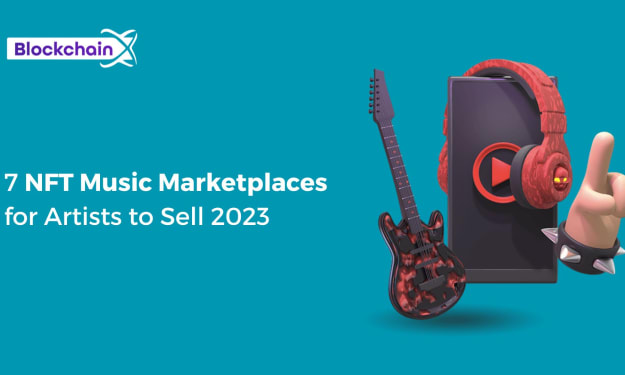
If Office Ono gets 100% of the advertising share instead of 30% or 40% from the platform, then she will get more income. But in the current stage of the Internet, this goal is almost impossible to achieve, because the traditional Internet is centralized and monopolized by Internet giants, and operators need to pay for various costs.
Web 3.0 requires a new paradigm to subvert the monopoly of today’s Internet giants and protect the interests of every Internet user. Thanks to the decentralized storage, immutability, and information encryption of blockchain technology, combined with the recent research summary of BlockBeats, Web 3.0 can be roughly labeled as follows:
1. Unified identity authentication system
2. Data rights confirmation and authorization
3. Privacy protection and anti-censorship
4. Decentralized operation
For many problems in the current Internet, such as the need to repeatedly register accounts, service providers abusing user privacy data, network companies using user data for profit, and network services cannot be continued, etc., you can use the above-mentioned 4 tags alone or in combination. , a solution for Web 3.0. For the corresponding attributes, BlockBeats will give readers a detailed explanation and discussion in subsequent articles.
Block Beats BlockBeats will also bring readers positive and negative views on Web 3.0 so that readers can fully understand Web 3.0.
A transparent and reliable Internet economic paradigm will be introduced by Web 3.0.
Because users have used Internet content for free for decades, everyone is not disgusted with the method of giving personal data to websites and service providers for free through the “User Agreement” and “Privacy Agreement”, and even thinks it is a matter of course. But we have neglected that the money earned by companies using user data will not be returned to users, and users have no right to obtain the remaining profits after the revenue covers operating costs. A lot of people take this for granted, but it’s not fair.
Whether it is Web 1.0 or Web 2.0, the centralization of operational services always brings more or fewer issues of transparency and trust. This problem can be solved through the blockchain technology application of data rights certification, data confirmation, and authorization. The data generated by the user in Web 3 world is owned by the user, and the user has no right to use it without authorization confirmation of the user. At the same time, users may also get a share of the benefits generated by the use of data through the token economy of the digital cryptocurrency industry.
The emergence of the token economy and digital assets also gives users the opportunity to participate in the operation of Web 3.0 development companies. They can participate in voting and dividends, and realize the positive interaction between developers and users. Users are both users and maintainers. For example, the Brave browser recommended by BlockBeats before. When users surf the Internet in the browser, the browser will recommend advertisements to readers, and at the same time return part of the income to readers. It not only consumes the user’s data but also generates income for the user. There will be more such products in the future, allowing users to participate in the company’s operations. Fred Wilson, a partner of AVC Capital, believes that this behavior can be understood as Open Data (open data), which is an important part of the development of Web 3.0.
What is Web 3.0?
Due to the Pharaoh’s involvement in a certain project’s mining, as was mentioned at the beginning of the article, a CDN node of a video website, delivering video files to nearby video users, and calculating himself according to the uploaded traffic. workload, and then share money from Youku or iQiyi, or Tencent Video. Lao Wang is a very standard Web 3.0 participant. He can enjoy the convenience of the Internet and earn money for his contributions.
In the traditional Internet field, users have very little control over their own data.
For example, an article you published on a blog may be deleted because of a “stop service announcement” from Sina Blog. Even the copyrighted music you paid for on NetEase Cloud Music will be deleted from the App because of the expiration of NetEase Cloud’s copyright, and you will never hear it again. Your beloved game may also be “disconnected from the server” because the developer can’t make money, and you spent months playing and destroying your equipment.
In the traditional Internet field, all this has happened, and more will happen. In the era of Web 3.0, this problem will be solved through decentralization.
Blockchains known as global computers such as Ethereum 2.0 and Dfinity will provide developers with basic computing services, without the need to rent servers, and user data can also be passed through IPFS, Sia, OrbitDB (decentralized databases using IPFS) ) and other technologies for decentralized storage, no one can control your data anymore. As long as you are willing to pay for the blockchain smart contract that the game runs, even if you are the only one left in the entire game, you can still play.
Changes to products and games must be voted on by the community, and developers no longer have dictatorial rights. Vitalik Buterin, the founder of Ethereum, was furious because of the random modification of character skills in the online game “World of Warcraft”. The emergence of Web 3.0 will limit the occurrence of this situation.
Web 3.0 is actually cold and emotionless, only in this way can it serve everyone faithfully.
The application of Web 3 in the financial field will also surpass our imagination of the current financial industry, and it has already landed. Take the Maker DAO decentralized lending platform as an example. On this platform, users can obtain the dollar-pegged stablecoin DAI by over-collateralizing digital assets.
Web 3.0 — a more humane Internet
In the eyes of traditional Internet people, Web3 may look like this.
Every time you buy something on JD.com, the website’s algorithm will make recommendations by looking at other products purchased by users who have bought a product like you or based on your previous browsing history and purchase history. What happened in the process? The site learns your latent preferences from other users and recommends content you might like. Essentially, the website itself is learning to become smarter.
About the Creator
BlockchainX
BlockchainX is a leading Blockchain development company rendering services across all streams. From NFT market to metaverse development, we help you simplify your tasks and identify better solutions for business in web3.






Comments
There are no comments for this story
Be the first to respond and start the conversation.